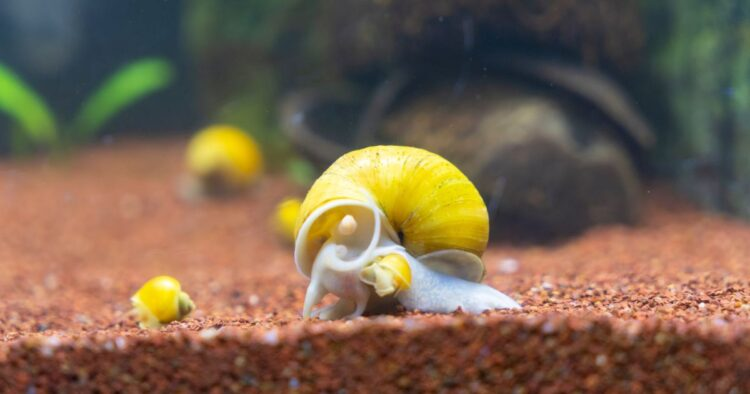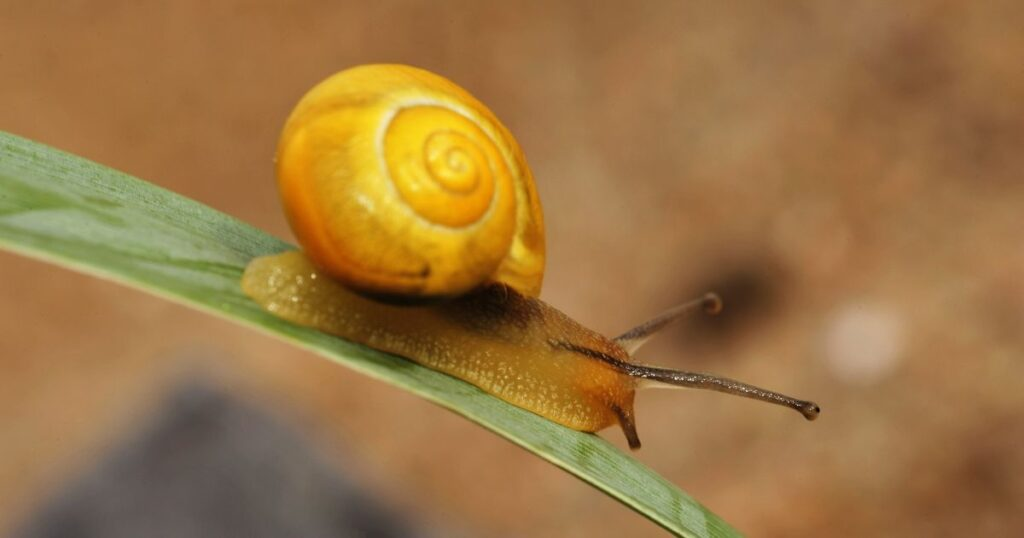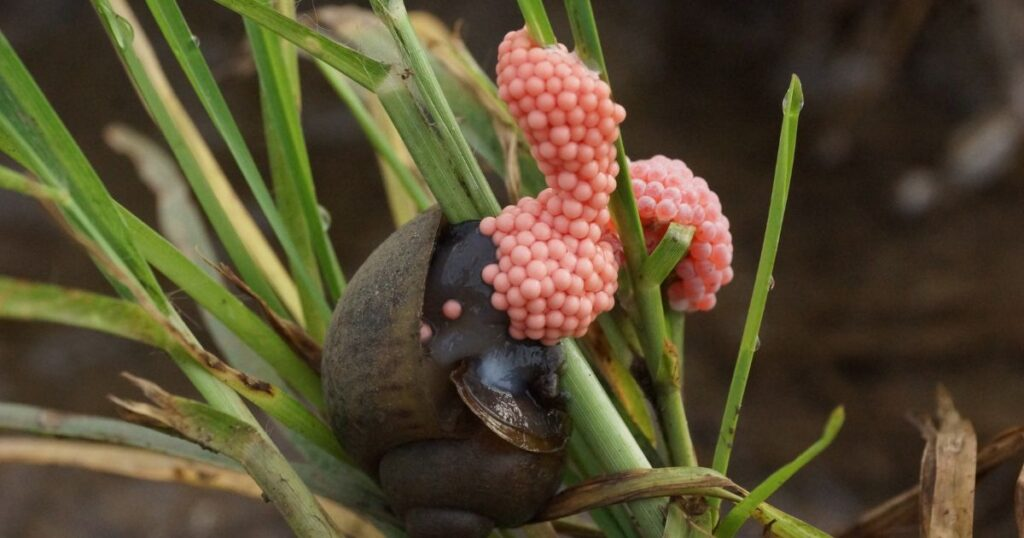It’s that time of year when you might notice little pink eggs dotting your garden, particularly around water sources. They might look cute and harmless, but these mysterious pink eggs are actually a warning sign of a much bigger problem—an invasion by the apple snail. Known for their striking egg clusters, apple snails pose a serious threat to biodiversity and agriculture alike. Let’s dive into where they come from, the issues they cause, and what can be done to control their spread.
What Are These Pink Eggs?

The clusters of pink eggs you see are not treats nor ornamental decorations. They are the eggs of a species known as the apple snail, scientifically called the Pomacea canaliculata. This freshwater gastropod hails from South America, where it typically resides in marshy areas, swamps, and ponds. While its pink eggs may seem intriguing, the snail’s presence signals potential damage to the local ecosystem.
Apple Snail: The Giant Snail with a Massive Appetite
Don’t let the name “apple snail” fool you; these creatures are far from the petite garden snails you might be familiar with. Apple snails are significantly larger, measuring between four to six centimeters wide and up to seven centimeters tall, with some even growing to a whopping ten centimeters in diameter! They’re not just bigger; they’re also incredibly voracious, feasting on aquatic plants and causing havoc wherever they go.
Rapid Reproduction and Egg Clusters
One of the most alarming aspects of the apple snail is its rapid reproduction rate. Female apple snails lay clusters of 400 to 600 eggs at a time, and they do so with alarming frequency. These eggs, which measure about two to three millimeters, range from pink to orange in color and are typically laid on vegetation just above the waterline. This rapid reproductive cycle allows them to spread quickly and establish themselves in new environments.
The Spread of the Apple Snail: A Global Problem
Originally native to South America, the apple snail has spread across various continents due to a combination of factors like global warming, human activity, and its adaptability to different habitats. Here’s a closer look at how this species has spread and why it poses such a significant threat worldwide.
Invasion Across Asia and North America
In the 1980s, the apple snail made its way to Asia, where it was initially introduced as a potential food source. However, it soon became clear that its impact on local ecosystems was far more damaging than anyone had anticipated. It wasn’t long before the apple snail established itself in rice fields and other agricultural areas, where it began to devour young plants, threatening crop yields. Today, it is considered one of the 100 most invasive species globally.
In North America, warming temperatures have made it possible for the apple snail to thrive. Populations have been reported in Florida, Texas, and even as far north as the Carolinas. The species is now well-established in parts of the United States, causing significant issues in aquatic ecosystems and rice paddies.
Introduction to Europe and the Case of France
Europe has not been spared from this invasion either. The first sighting of apple snails in France was reported in 2018, near Fréjus, in the reservoir upstream of the Saint-Esprit dam. This discovery led to a series of emergency measures to prevent further spread, but the apple snail continues to establish itself across parts of southern France. As with other countries, its presence is particularly concerning for biodiversity and agricultural interests.
The Environmental and Agricultural Impact of Apple Snails

Apple snails are notorious for their destructive impact on both natural ecosystems and agricultural fields. Here are a few ways in which they wreak havoc:
- Destruction of Aquatic Vegetation: Apple snails consume large quantities of aquatic plants, which are essential for maintaining healthy ecosystems. Their feeding habits disrupt the balance in freshwater habitats, leading to reduced biodiversity.
- Threat to Agriculture: Rice fields, in particular, are vulnerable to apple snails, as the young shoots are a favorite food source. This has led to substantial crop losses in affected areas, particularly in Asia.
- Impact on Native Species: Apple snails outcompete local snail species for resources, threatening native biodiversity. Furthermore, their feeding habits can lead to water quality degradation, as they stir up sediment and increase the amount of decomposing plant matter in the water.
Controlling the Spread of Apple Snails

Given the potential damage apple snails can cause, various control measures have been implemented around the world. In some areas, apple snails are collected manually, and eggs are destroyed to limit their spread. In other regions, biological control methods are being explored, including the introduction of natural predators.
However, these efforts are not always effective, especially given the snail’s rapid reproductive rate and adaptability. In some countries, such as the United States, the sale and transport of apple snails have been restricted to limit their spread. France has also implemented emergency measures, including prohibiting access to certain water bodies and conducting egg collection campaigns.
What You Can Do If You Spot Pink Eggs in Your Garden
If you happen to spot clusters of pink eggs in your garden, it’s essential to take immediate action. Reporting the sighting to local environmental authorities can help track the spread of this invasive species. Additionally, you can carefully remove and destroy the eggs, taking care to ensure that they do not accidentally get transported to other areas. Here’s how to proceed if you find apple snail eggs:

- Contact Local Authorities: Environmental agencies often have protocols in place for dealing with invasive species, so reach out to them for guidance.
- Remove the Eggs Safely: If allowed, carefully scrape the eggs off the surface they’re attached to and dispose of them in a sealed container. Avoid simply throwing them in water, as this can facilitate their spread.
- Monitor Your Garden: Keep an eye on any additional clusters that may appear. Apple snails reproduce quickly, so ongoing monitoring is essential for preventing a full-blown infestation.
Conclusion: A Silent Threat That Requires Vigilance
While pink eggs may look beautiful, they are anything but innocent. The apple snail is a formidable invasive species capable of causing severe environmental and agricultural damage. Its ability to adapt, reproduce rapidly, and spread across continents makes it a global problem. As gardeners and outdoor enthusiasts, staying vigilant and taking action when necessary is crucial to curbing the spread of this invasive snail. Together, we can help protect biodiversity and ensure that these mysterious pink eggs don’t signal a larger, more damaging invasion.


